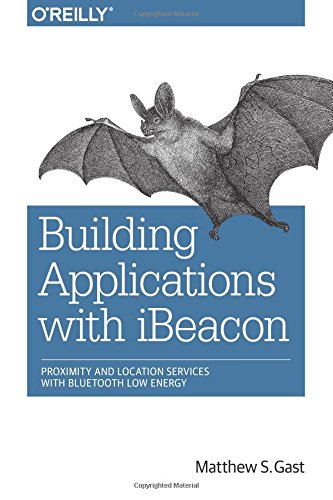Recently, I have been working on a legacy project which was not using the standard Maven pom conventions, source code and test code are located at separate paths, the directory structure is also not follow the standard.
So, now we are starting to add more unit tests and integrate that with CI pipeline. The code base is ~200MB including everything. Instead of restructuring the whole project layout, which could block the active development and introduce unpredictable bugs, we decided to twist the pom as best as we can. Here are some nice tips I learned (I am a Maven newbie).
-1. Refactor Your Code
Testing should not be an after-thought. It should be considered along the initial code design and implementation. Apply design patterns, use modular designs and other techniques so that writing tests become possible in the first place.
0. Writing Unit Tests
There are many unit testing frameworks. Two of the popular ones we use in the company are
JUnit and
TestNG. Here is
a nice StackOverflow comparison for them. Note that if you are using Eclipse, you will need to
install TestNG plugin, while JUnit support is built-in. Other IDEs like IntelliJ and Netbeans support both too.
There are several mocking frameworks as well: Mockito, Powermock, EasyMock, jMock, just to name a few. We are using
Mockito and
Powermock. Here is
a nice quick guide how to use them. If you are wondering why we need both, it's because Powermock
addresses several features missing from Mockito, such as mocking static methods, etc.
Vogella has several short but useful guides on unit testing, highly recommend:
This is the plugin that runs the unit tests and publish test results. The plugin is documented well on its website, so I am not going to repeat anything here. Quick summary:
- It can easily include, exclude tests, skip tests (think twice before you do), etc.
- It support JUnit, TestNG, plain POJO tests. The report format is compatible with JUnit output, so it can be easily integrated with CI tools.
- It also supports parallel test runs.
- etc.
Here is
a list of all the configuration options for Surefire plugin, very useful.
Normally, you would pick a testing framework and stick to it. But in our case, we have both tests written in JUnit and TestNG under the same test directory. So, how to support that?
Luckily, Marcin has found a solution already to have JUnit and TestNG tests live happily together, see his post
here for details. He also has
a sample pom that you can use as boilerplate. Basically, you declare dependencies inside Surefire plugin:
...
<properties>
<surefire.version>2.16</surefire.version>
</properties>
...
<plugin>
<artifactId>maven-surefire-plugin</artifactId>
<version>${surefire.version}</version>
<dependencies>
<dependency>
<groupId>org.apache.maven.surefire</groupId>
<artifactId>surefire-junit47</artifactId>
<version>${surefire.version}</version>
</dependency>
<dependency>
<groupId>org.apache.maven.surefire</groupId>
<artifactId>surefire-testng</artifactId>
<version>${surefire.version}</version>
</dependency>
</dependencies>
</plugin>
...
2. Maven compiler plugin
Maven compiler plugin is used to compile your source code. Here are the lists of configuration options for its
compiler:compile and
compiler:testCompile goals:
But our problem is that it turns out the compiler plugin assumes the source code and test should live under the same root source code directory. In our case, this is not the case. I tried various options such as "testSource", "testIncludes" to specify the test path, but without luck.
Finally, I found a plugin
build-helper-maven, which allows customized source and test directories. And it worked like a charm (borrowing from its website):
<project>
...
<build>
<plugins>
<plugin>
<groupId>org.codehaus.mojo</groupId>
<artifactId>build-helper-maven-plugin</artifactId>
<version>1.8</version>
<executions>
<execution>
<id>add-test-source</id>
<phase>generate-test-sources</phase>
<goals>
<goal>add-test-source</goal>
</goals>
<configuration>
<sources>
<source>some directory</source>
...
</sources>
</configuration>
</execution>
</executions>
</plugin>
</plugins>
</build>
</project>
3. Maven Clover Plugin for Code Coverage
To generate code coverage, you can use the
Maven Clover plugin, note that Clover is free for non-commierical use, for commercial use, you will need to obtain a license and configure the plugin to point to the license file.
4. Maven FindBugs Plugin
FindBugs is a code analysis tool to find potential bugs in your code. It has nice IDE integration and it also integrates well with Maven. You can set it up as a step in CI so that if the bugs will fail the build. I actually scanned our code base and found several severe bugs (one is a switch statement without break, similar to Apple's recent SSL bug).
Please see
the plugin website to set it up, quite straightforward.
5. "One Last Thing"
Another useful tip I found out is that when some of the plugin runs, e.g. test, code coverage, findbugs, etc. they require a fair amount of memory. Take the Surefire for example, depending on your configuration, it will fork separate JVM and threads to run the tests. I had JVM exited abruptly in several cases due to this reason.
Refer to the above configuration options to add customized JVM options. For example, for Maven compiler plugin:
<argLine>-Xmx2048m -XX:MaxPermSize=1024m</argLine>
For Maven compiler plugin:
</compilerArgs><arg>-Xms2048m</arg><arg>-XX:MaxPermSize=1024m</arg></compilerArgs>

